Robert “Bob” Cooke, was the highest scoring pilot that flew in Spitfire ML295; this is the Spitfire that The Few watch is being created from.
With career credits of 4 aircraft destroyed and 2 damaged, he narrowly missed becoming designated an Ace pilot (which required 5 aircraft destroyed).
His impressive score sheet began on 14th July 1944, when he managed to severely damage a Focke-Wulf 190 while flying in Spitfire ML295.

Robert “Bob” McLean Cooke
Robert “Bob” Cooke was born in Milton, Ontario on 11th February 1919, to a Scottish/Irish family. There he lived at home with his father, Peter (known by his middle name, Wellington), who worked as a grain merchant, together with his mother Agnes and older brother Alexander. Today, Milton is part of the Greater Toronto area, but when Bob lived there it was a small town 1/60th of the current size, with around 1,800 residents.
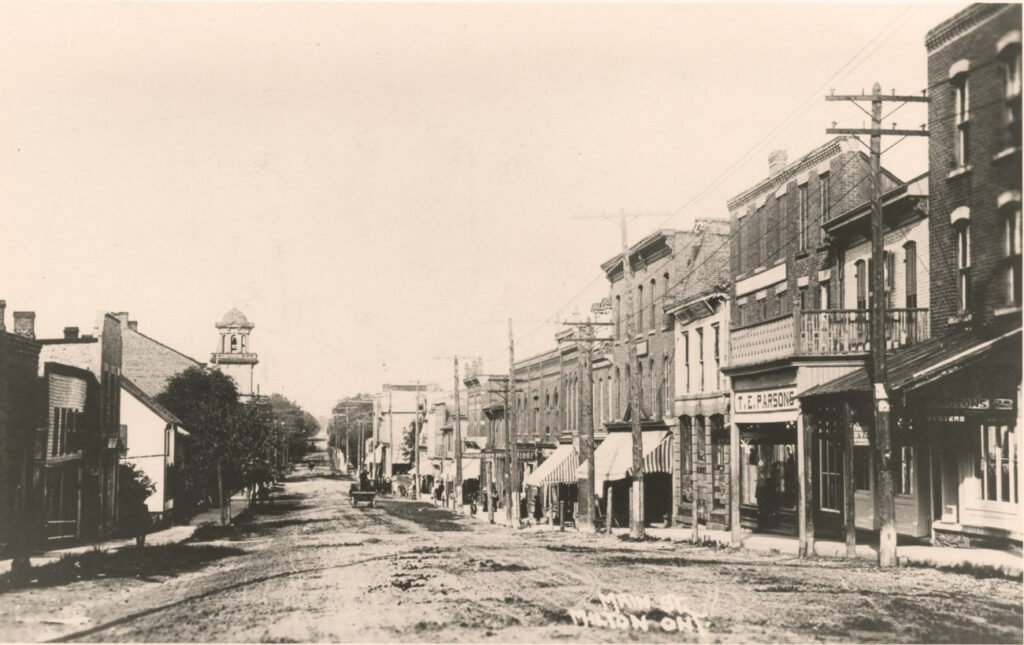
Joining Up
Following the outbreak of the Second World War, in late 1939/early 1940 aged just 20, Bob volunteered to join the Royal Canadian Airforce as a pilot. He signed up locally with the British Commonwealth Air Training Plan office and likely began his initial 4 week training at the Elington Hunt Club in Toronto.
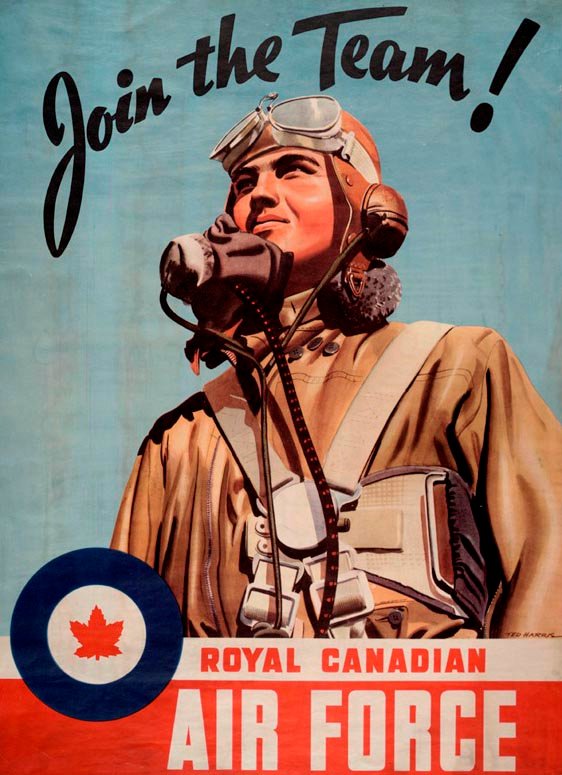
Training Begins
After successfully passing his initial training, he moved on to an Elementary Flying Training School, studying for 8 weeks at Malton. Here he flew for the first time, with an instructor taking him up in a De Havilland Tiger Moth – a two-seater bi-plane.
Having proven to the instructor that he had the aptitude to become a pilot, he then spent the next 16 weeks flying both Harvard and Yale aircraft, both single wing trainer aircraft produced by the North American Aviation company.
He also got to grips with his gunnery training, learning the core principals of deflection shooting – aiming where the target is going to be, not where it is.

Earning his Wings
With some significant airtime now under his belt, Bob was to starting to take solo fights out. His next challenge would be getting to grips with the types of fighter aircraft he would face the Luftwaffe in.
So, he moved to Bagotville in Quebec, where at the Operational Training Unit (OTU) there, he stepped into the Hawker Hurricane. His trainers at the OTU included veterans from the Battle of Britain, who would have been able to pass on real world experience of encountering the Luftwaffe’s finest while flying in their Hurricanes and Spitfires.
I am sure Bob would have been in awe of these grizzled pilots, as they told him tales of facing off against formations of hundreds of bombers escorted by dozens of fighter aircraft. He must have been really starting to feel a mix of excitement and anxiousness, as the reality of what he had signed up to began to sink in.
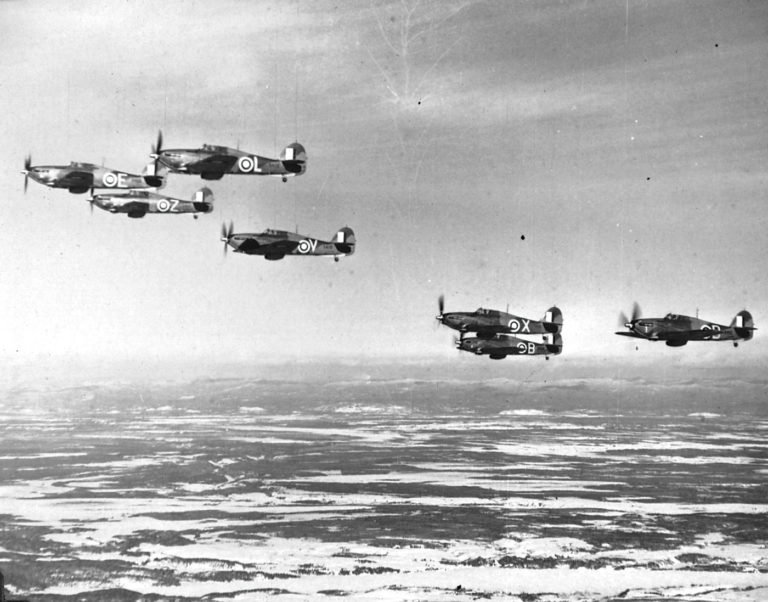
After roughly 2 years of intense training, he finally graduated and earned his wings. Bob then had a final opportunity to visit his family and say his last goodbyes before getting on the next ship out to England.
All in the Name
Bob’s last name was Cooke, however throughout the war, he used the spelling Cook. I can only assume that when he joined the airforce and told them his name they wrote it down with the common spelling and Bob didn’t either notice or correct them. He obviously went along with the temporary change and even signed all his wartime documents “Cook”.

Not too Tall for a Spitfire
One of the first things you would notice if you met Bob was his frame, being at least 6’4” (193cm), long limbed and svelte.
The pilot’s parachute was part of their flight suit, which was designed so the main silk chute would become their seat cushion when they sat down – adding an additional 6” on their height. In addition, they wore an inflatable life jacket nicknamed the “Mae West” as the pilots believed the bulky suit made them look like the curvaceous actress.
This meant that it would have been a very tight fit for Bob in the cockpit of the Spitfire, although from his elevated position he would have had a slightly increased field of view – helping him to spot both dangers and opportunities.
The height limit for a Spitfire pilot was 6’6″ (198cm).
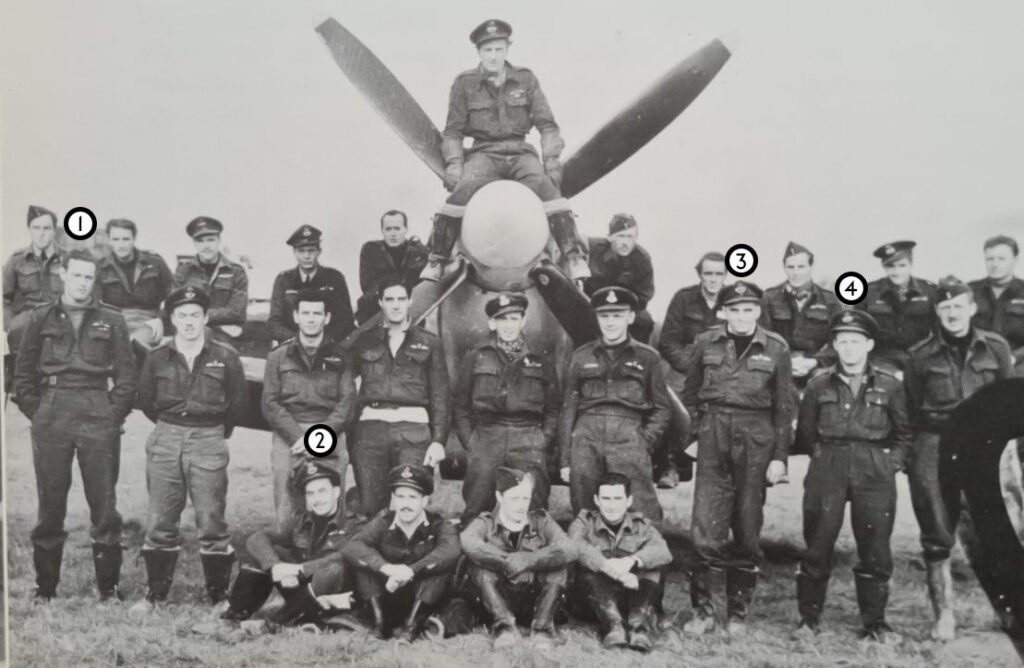

Dick Audet’s photo from when he signed up to the RCAF, shows he was 6’3″ (190cm)
Becoming Operational
In late 1942 Bob had arrived in England, where he was allocated to a Group Support Unit (GSU). This was a holding area for both pilots and Spitfires, where up to 60 of each were held in reserve and would be sent to fill in gaps that appeared in active squadrons from operational losses. This is also where Bob would have been first introduced to the Spitfire and he would have received training to make his official transition from a Hurricane pilot to becoming a qualified Supermarine Spitfire pilot.
The GSUs were also where pilots would be sent after they finished their operational tour, while they waited for the next available ship to take them back home. Here they would have met the fresh incoming pilots, such as Bob, and would have passed on to them invaluable advice about the realities of flying in combat.
Joining 416 Squadron
Now comfortable flying a Spitfire, in March 1943 Bob was assigned to 416 Squadron who were based at Kenley Airfield just South of London. He was obviously showing promise as a pilot and had been promoted to the rank of Pilot Officer.
416 Squadron were now fully outfitted with the latest Spitfires, the Mark 9, which had just been delivered. These early 1943 models were fitted with the Rolls Royce Merlin 63 engine. The later Mark 9 Spitfires, such as ML295, had an improved Merlin 66 engine and were specifically outfitted for low-altitude flight.
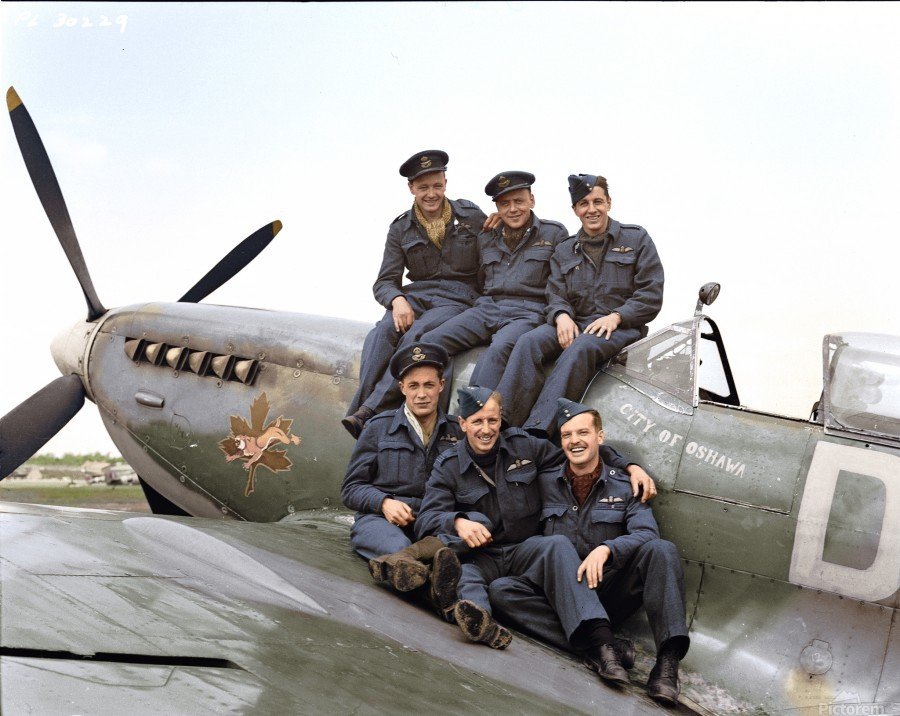
First Sorties
On 29th March 1943, Bob took Spitfire BS385 out on a 2 aircraft patrol of Mayfield in SE England. It was a proactive patrol to look out for any marauding bombers or fast fighter assaults. The mission however was uneventful, with no enemy aircraft being seen.
Over the next week, Bob went on 3 more patrols over SE England, which were also without incident. Then on 8th April 1943, Bob Cooke was assigned to his first mission over France. This was a Ramrod sortie which would fly across the English Channel and attack targets of opportunity and attempt to draw out enemy fighters.
Bob must have been buzzing with excitement at the prospect of finally getting to grips with the Luftwaffe – this was what he had been training for over the past 3 years, and now the time had finally arrived.
The Squadron started their Spitfires, their Rolls Royce Merlin engines roared to life, they taxied to the runway, set their throttle to full-power and took to the skies. However, once in the air their excitement soon turned to disappointment, as poor weather and visibility forced them to turn back and return to base. As the skies began to clear that afternoon however, they had their second chance.
This time they safely crossed the English Channel and reached German occupied France. This was where the heart would have really started to race, as each of the pilots constantly scanned their surroundings for incoming threats and potential targets. They followed their patrol along the Normandy coast near Dieppe, before making a quick penetrating run 10 miles inland before returning along the same route and back across the Channel.
The adrenaline would still have been pumping when they touched down, despite the mission having been uneventful.

Disaster on Takeoff
Following a short rest, on 19th April 1943, Bob was called up for his next sortie, another patrol over SE England. He was keen to get back into the air – perhaps too keen. He lined up his Spitfire on the airstrip, opened the throttle and sped down the runway.
Normally a Spitfire will begin to lift from the runway and into the air once it has reached 85mph, with a pilot waiting until their airspeed is at least 140mph before they begin to climb. It appears that in his rush to become airborne Bob had raised his undercarriage too early and begun his climb, however without having reached the necessary speed – his Spitfire stalled.
Rather than gliding gracefully into the air, the nose heavy aircraft made the short trip back down to the ground in blink of an eye. With no undercarriage to land, Spitfire BR635 ungracefully skidded along the grass and crashed into the water butts at the end of the runway. The Spitfire was destroyed and Bob was severely injured and rushed to hospital.
The extent of Bob’s injuries are unknown, but he appears to have been non-operational for over a year. As he spent his time making what would be a full recovery, he would have had plenty of time to reflect, and also again build up the burning desire to get back in the air.
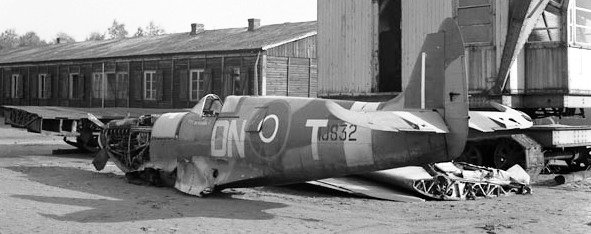
Back to War
After the doctors had given him a clean bill of health, Bob made his way to 83 GSU (Group Support Unit). The 83 GSU were formed in March 1944 and were initially based in Redhill in Surrey, before moving to Bognor, Sussex in June 1944.
Cooke did not have to wait too long to be assigned to a new squadron, and went with a promotion to the rank of Flying Officer.
On 4th July 1944 he arrived at 411 Squadron, who were at their forward base at Bény-sur-Mer in Northern France. Bob was now as close to the action as he could be, and after having moved from the relative safety of England would have immediately felt the change in atmosphere at the new airbase.
From the airfield, the city of Caen was just 8 miles away and would still be in German hands for another month. The environment Bob found himself in was filled with the constant background noise of small arms fire, exploding artillery and bursting anti-aircraft shells. Along with this, his new Squadron mates would be recounting stories of their latest missions, giving advice on how to best handle the Spitfire, and what dangers to watch out for.
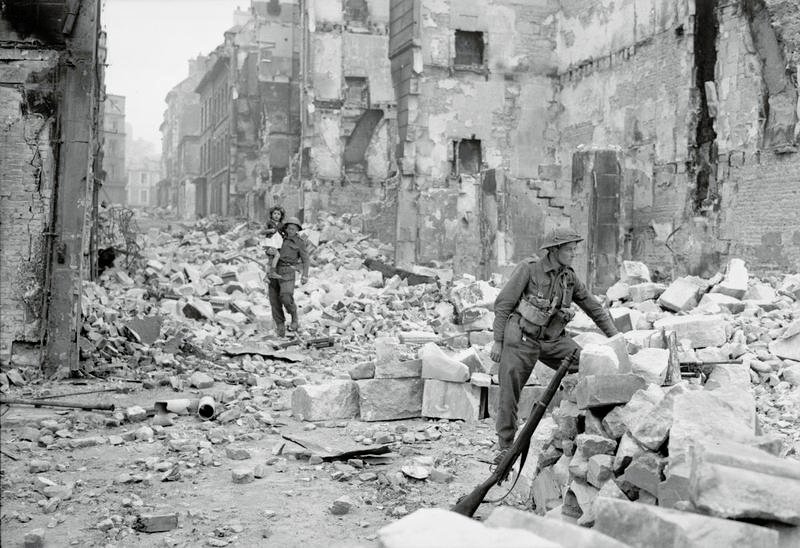
The 411 Squadron records note that Bob had previously served with 421 Squadron, however there doesn’t appear to be any record of him being with this squadron. It is likely a typing mistake and a mix up with 416 Squadron – as both were RCAF Squadrons that were part of the 2nd Tactical Air Force.
Flying with 411 Squadron
Just 3 days after joining the squadron, on 7th July 1944, Bob had his first mission. For this sortie he was allocated to Spitfire ML295.
The Squadron’s operations notes for the mission state: “Another armed recee was carried out in the Lisieux-Bernay area. It was uneventful although lots of opposition was expected as it was in connection with the bombing of Caen area by about 700 heavies and escort.”
Lisieux is about 50km east of Caen, and so it is likely that this mission was a proactive intercept mission, aiming to ambush any aircraft sent to defend against the bombing of Caen. As the mission notes state, it was uneventful, which was a reflection of the sorry state of the Luftwaffe by July 1944, who were unable to effectively defend against Allied attacks.
Following his first mission, Bob flew a further 4 sorties that failed to spot any Luftwaffe.
Advance through Europe
This map shows all of the bases that Bob Cooke would eventually fly from while he was with 411 Squadron, along with the date the Squadron relocated to each base.
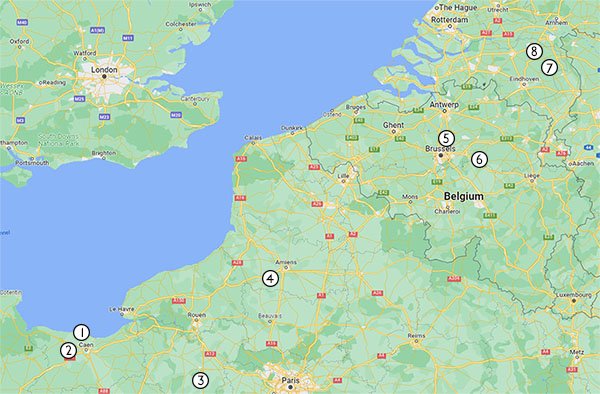
France
1) Beny-sur-Mer, 19th Jun 1944
2) Cristot, 8th Aug 1944
3) St Andre & Illiers l’Eveque, 1st Sep 1944
4) Poix, 3rd Sep 1944
Belgium
5) Evere, 7th Sep 1944
6) Le Culot, 21st Sep 1944
Netherlands
7) Rips, 4th Oct 1944
8) Volkel & Heesch, 20th Oct 1944
After 11th April 1945, they left Heesch and were based in Germany.
Just another Patrol
On 14th July 1944, Spitfire ML295 had been scheduled to fly 4 patrol sorties that day, with Bob taking the 2 in the afternoon.
Harold Kramer had flown the 2 sorties in the morning, both of which had not seen any enemy aircraft. In fact of the 14 patrols that 411 Squadron flew that day, only one would encounter the Luftwaffe.
As 2pm arrived, Bob was sat is his Spitfire along with 3 other wingmen. They each took off from the runway and once in the air joined up into their “finger-four” formation and began to patrol just north of Caen.
Meeting the Enemy
Flying at 2,000ft (600m) the patrol spotted a group of 12 Focke-Wulf190s (FW190). Despite being outnumbered 3-1, they did what they had trained for – they attacked.
This was the first time Bob had ever come face-to-face with a German aircraft. The transcript below is from Bob Cooke’s combat report.
“Kenway reported Bogies NW of Caen. I was flying Yellow 4 when we sighted 12 FW190’s. My No. 3 broke starboard after one in a climbing turn. I saw strikes along its fuselage. I went after one on the port side of my No 3. He broke around to starboard and then port trying to get into cloud. I fired a 3 second burst from 20° to 10° at him when he broke port at about 400 yds and saw strikes along the port side of his fuselage; but I broke off when he went into cloud.
I was using the ordinary reflector sight and my cine camera was turned on.
I claim one FW190 Damaged”.
These four 411 Squadron pilots had each scored a hit, 2 aircraft had been destroyed and 2 damaged, while suffering no losses. One of the pilots flying with Bob who scored a kill was Tommy Wheler, who I talked about in the previous Sortie.
Unfortunately, although the report claims that the cine camera was used, no footage of this incident has survived.
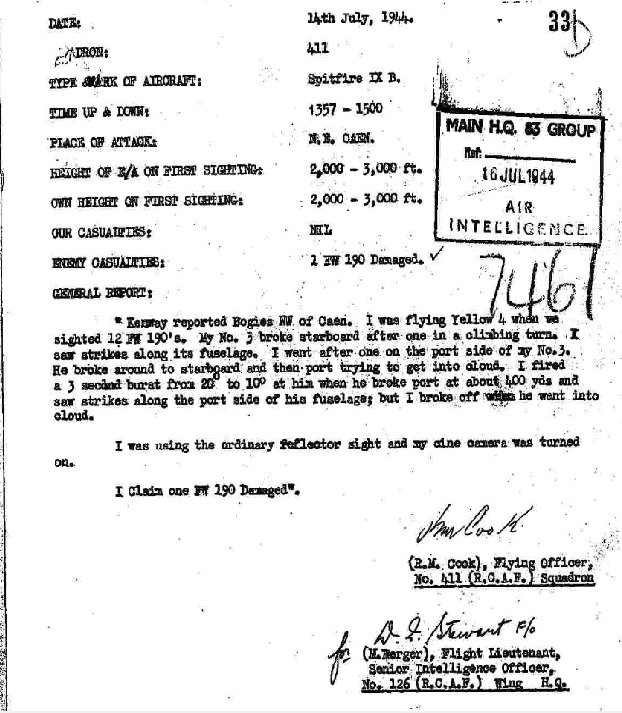
Bob Cooke in Spitfire ML295
As we know from Sortie 13, Spitfire ML295 was later shot down by anti-aircraft fire and crashed while being piloted by Harold Kramer.
Of the 17 missions that Cooke flew from when he joined 411 Squadron to when Spitfire ML295 was lost (4th July to 30th July 1944), he flew 9 of those sorties in ML295.
That brief period would have been some of the most memorable for Bob; it was his first time in France, at the front lines and facing off against enemy aircraft. He and the other 10 pilots that flew ML295 would have shared not just stories, advice, cigarettes and plenty of tea and biscuits, but more importantly a bond.
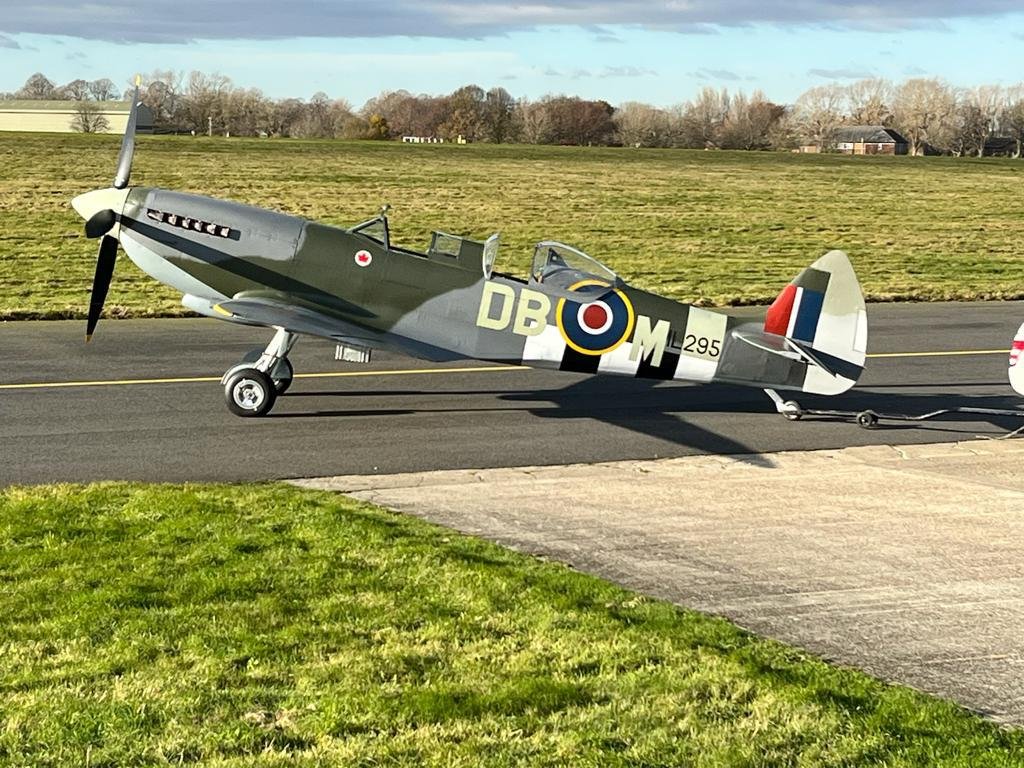
Following the loss of Spitfire ML295 on 30th July 1944, Bob was allocated with a different Spitfire that he would fly regularly. Of the 40 sorties he flew from 30th July to 27th September 1944, 50% of them were in Spitfire NH317.
Market Garden
411 Squadron continued to push forwards as the Allied lines rapidly advanced through Europe.
When Operation Market Garden launched on 17th September 1944, 411 Squadron, including Bob, provided cover for the airborne troops who were trying to create a 60 mile corridor from Belgium through the Netherlands – liberating the cities of Eindhoven, Nijmegen and Arnhem along the way. If the Allies could reach these objectives it would allow them to cut off a huge swathe of German troops and with a secured bridge across the Rhine river, it would put them in a perfect position to attack the German industrial heartland. This operation was hoped to accelerate the end of the war in Europe.

The regular sorties flown by 411 Squadron helped to supress German counter attacks and disrupt supply lines. Ultimately, Market Garden wasn’t successful in all of its objectives, specifically being unable to capture Arnhem or secure a crossing over the Rhine.
Sadly, this failure meant that the Netherlands would have to wait until 1945 to be liberated. That winter, in an effort to supress resistance, the German forces blocked food transportation to civilians in their occupied territory; this led to more than 20,000 Dutch citizens starving to death as a result.
Goodbye to a Spitfire
On 24th September 1944, Bob flew Spitfire NH317 for the last time; taking it on a patrol looking for German aircraft, which proved uneventful.
Although NH317 was a Mark 9 variant Spitfire, with exactly the same weapon layout and performance as the other Spitfires in the squadron – as soon as Bob stopped flying the aircraft, his luck changed.
3 days later, on 27th September 1944, he scored his first air victory.
First Kill
Flying over the Nijmegen area in the Netherlands, the patrol Bob was in spotted a Messerschmitt Me410. This was a twin-engine heavy fighter, with double the firepower of a Spitfire and heavily armoured. Undeterred, the Spitfires moved in and Flight Lieutenant Gordon Lapp (who would later make both Squadron Leader and an Ace pilot) opened fire, damaging one of the German aircraft’s engines.
With Lapp turning away to avoid debris falling from the damaged aircraft, Cooke moved in on the Me410’s tail. This was a dangerous position as the Me410 had two defensive turrets to cover its rear.
Despite the risks he opened fire with his two M2 Browning machine guns and two Hispano 20mm cannons. Keeping on the target, Bob held the trigger down for 10 seconds, expending almost his entire his ammunition load (which only allowed for 12 seconds of sustained fire). He watched as the Me410’s cockpit, centre section of the wing and starboard engine caught fire. Completely disabled, the Me410 rolled over and dived into the ground.
Incredibly, part of this attack was recorded by Bob’s gun camera
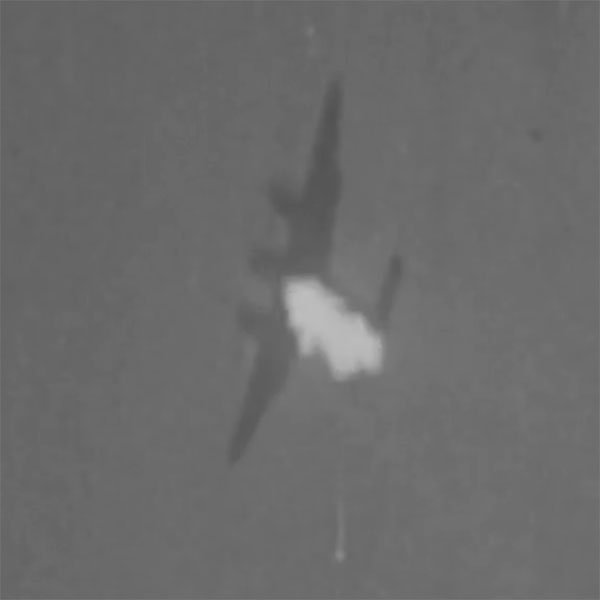
The One that Got Away
Then the following day, Cooke struck again. Flying the same Spitfire as he had on the previous sortie, he again was patrolling the Nijmegen area when he spotted a Focke-Wulf 190 above him.
Remaining unseen, he stalked the FW190 and as it started to reduce its altitude he launched his ambush. Bob fired a short burst from 700 yards which hit the target and the enemy aircraft started to smoke (this was a long distance shot and well outside the preferred range of less than 200 yards).
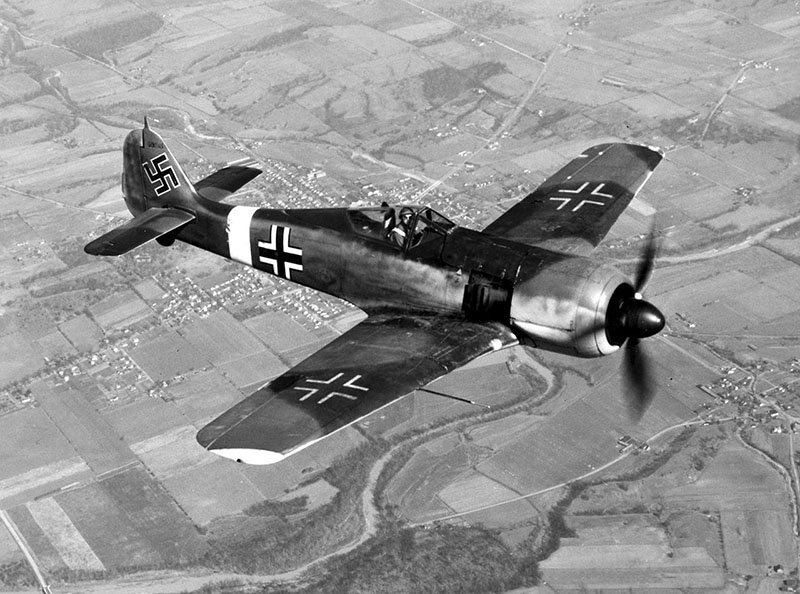
The FW190 took evasive action and dove down to the ground, but Cooke kept on his tail. Closing in for the kill, Bob pressed his weapons trigger, but nothing happened – his guns had jammed.
He continued to chase the FW190 for 10 miles, constantly trying to fire his weapons, but with them remaining jammed and him now getting closer to the German border, he decided to turn back.
New Spitfire and Promotion
On 30th September, he stepped into what would be his Spitfire of choice for the next few months, Spitfire NH380, in which he would fly over 65% of his missions during this period. Throughout the month of October he flew patrol missions, providing cover for the Allied troops advancing through Europe, attacking convoys, trains and chasing off marauding aircraft.
In recognition of his skill and service, he was promoted to the rank of Flight Lieutenant on the evening of 6th October 1944.

After his promotion Bob seems to have taken a 3 week break from flying with the Squadron. This could have been for training – as a senior ranked pilot he would now be expected to be a flight leader during missions, or it could have just been a well-deserved break; having flown almost non-stop for 3 months.
But judging from the operations that he flew immediately after his break, it appears that those 3 weeks were well spent training for something that the Spitfire is not well known for; dive-bombing.
Dive-bomber
From 29th October until 8th December 1944, Bob flew 22 missions with the squadron, all of which were dive-bombing sorties.
The Spitfire was a very capable dive-bomber, able to carry 1000lb of bombs – a 500lb bomb under the fuselage and a 250lb bomb under each wing.
Their targets were generally fixed and included both military targets and infrastructure. Railway lines and trains were always popular choices, as were anti-aircraft and artillery batteries and V1 and V2 rocket launch sites.
In favourable conditions, a Spitfire pilot could deliver his 1000lb bomb load to within 10 metres of his target.
A Spitfire carrying such a heavy load meant that the performance of the aircraft would be hindered until the bombs had been delivered. This meant that air superiority had to first be achieved, so the pilots could be confident that they could safely reach their targets. In the event of an enemy fighter being spotted, if it was safe to do so, some or all of the Spitfire pilots would drop their bomb loads and engage.
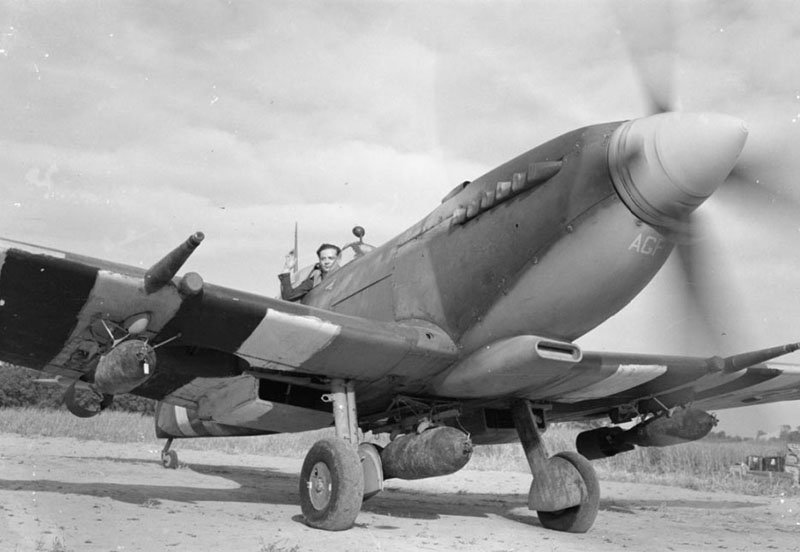
Rocket Powered Fighters
On 5th Dec 1944, while on a bombing mission, Bob witnessed a rare sight; a long trail of smoke being left behind by a small aircraft travelling at almost supersonic speed. Although he had only heard about the aircraft from intelligence briefings, he knew immediately what it was; a Messerschmitt Me163.
The Spitfires of 411 Squadron were not the target of the Me163 that day however and so they simply watched in amazement as the human piloted surface-to-air missile flew off into the distance.
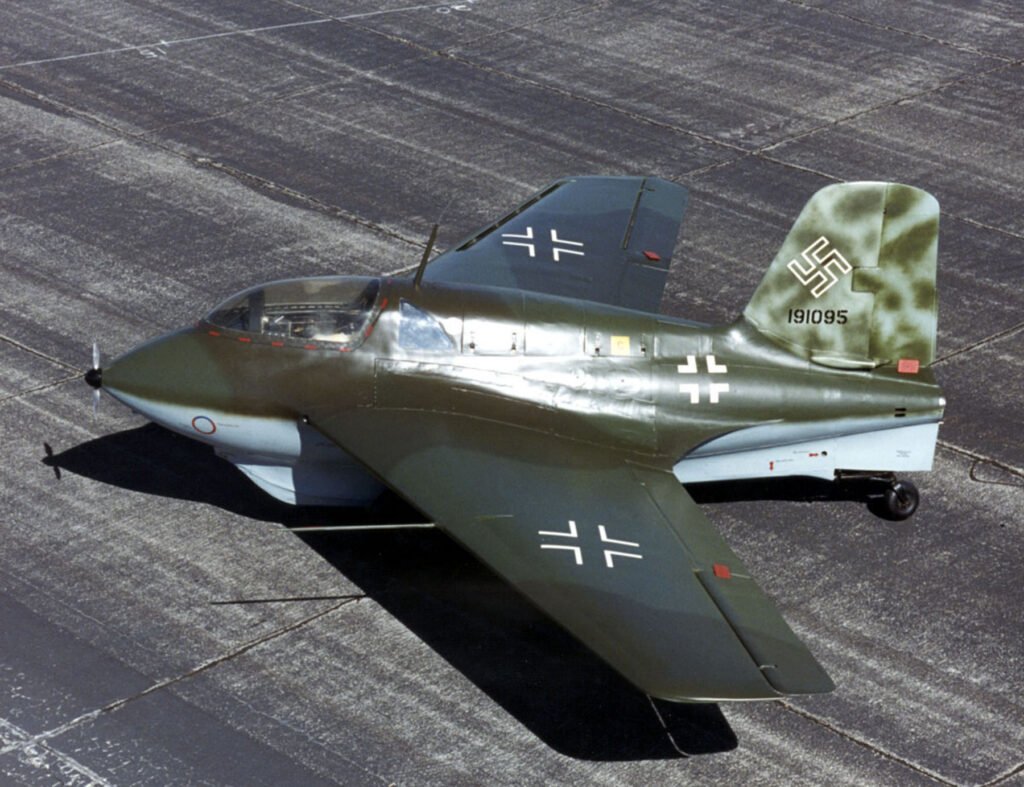
The Me163 was a rocket powered fighter aircraft, capable of reaching speeds in excess of 620mph, and proved almost impossible for the Allies to intercept.
However, despite over 300 Me163s being built, they were only able to account for the losses of 17 Allied aircraft. This was compared to 9 Me163s that were lost in combat and a further 9 that were destroyed in accidents. With an additional unknown number of test pilots killed during the development of the aircraft, the Me163 ultimately was an expensive waste of both life and resources.
Battle of the Bulge
When, on 16th December 1944, the last major German offensive of the war began, nicknamed the Battle of the Bulge, the pilots of 411 Squadron were again on duty to provide much needed cover for the troops. The initial poor weather and visibility meant that the Allied pilots had difficulty spotting and targeting German positions, however that changed on 24th December when the skies cleared.
There was no respite over Christmas and Bob continued flying multiple patrol missions each day, attacking German units and supply lines.
The clearing of the weather had meant that the Luftwaffe were now also drafted in to provide cover for the German assault which lasted until 25th January 1945.
Revenge for Malmedy
On 27th December Bob spotted a group of Messerschmitt Bf109s over the town of Malmedy in Belgium. This was where a week earlier the “Malmedy Massacre” had occurred – where at least 84 American prisoners of war were murdered by SS troops. In the confusion of the slaughter several prisoners had managed to escape and once back to Allied lines had recounted the tragedy. The incident was very well publicised at the time and all of the 411 pilots would have been well aware of brutality of the forces they were facing.
Moving in on the group of Bf109s, Bob picked his target and gave chase. Despite the German pilot making a stall turn, going into a dive and making violent and desperate evasive manoeuvres, Bob kept on his tail. Closing to 150 yards, he opened fire. Cooke saw hits on the cockpit, and as the Bf109 rolled into a steep dive, Bob followed him down and gave him another burst for good measure before watching his foe smash into the ground.
Again, Bob recorded the fight on his gun camera.
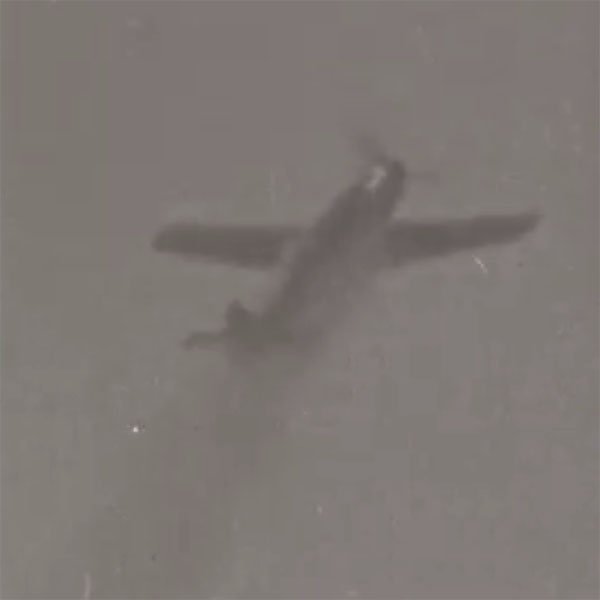

The Most Successful Day
The full effectiveness of 411 Squadron was demonstrated on 29th December 1944, resulting in what would be the best results in the history of the squadron.
It began in the morning with 4 trains being wrecked, along with a FW190 being destroyed – the Focke-Wulf had not been shot down, but rather had been chasing a Spitfire and was right on his tail. Taking evasive action, the Spitfire had gone into a near vertical dive, before making a high G pull up at the last moment, levelling off and skimming above the ground.
The Luftwaffe pilot however could not match the Spitfire’s manoeuvrability and, being unable to pull up out of the dive in time, the FW190 crashed into the ground at full speed.
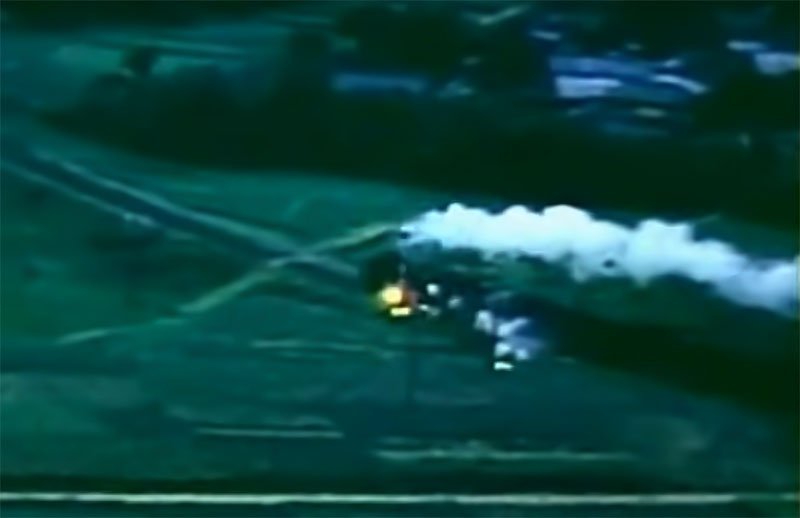
The squadron returned back to base for rearmament and refuelling and after lunch they set off on another patrol, with Bob taking the role of Blue Leader. When they reached the German town of Rheine, just north of Münster, Cooke spotted an Me262 (the Luftwaffe’s state of the art jet fighter). Bob turned to get on the tail and attack the aircraft, however he couldn’t hope to match the speed of the Me262, which exceeded the top speed of his Spitfire by 160mph.
As they watched the Me262 fly away from them, the Spitfire group started to break off their attack. As they did they noticed above them were 3 Bf109s that were diving in on their position in an attempt to ambush the exposed 411 pilots.
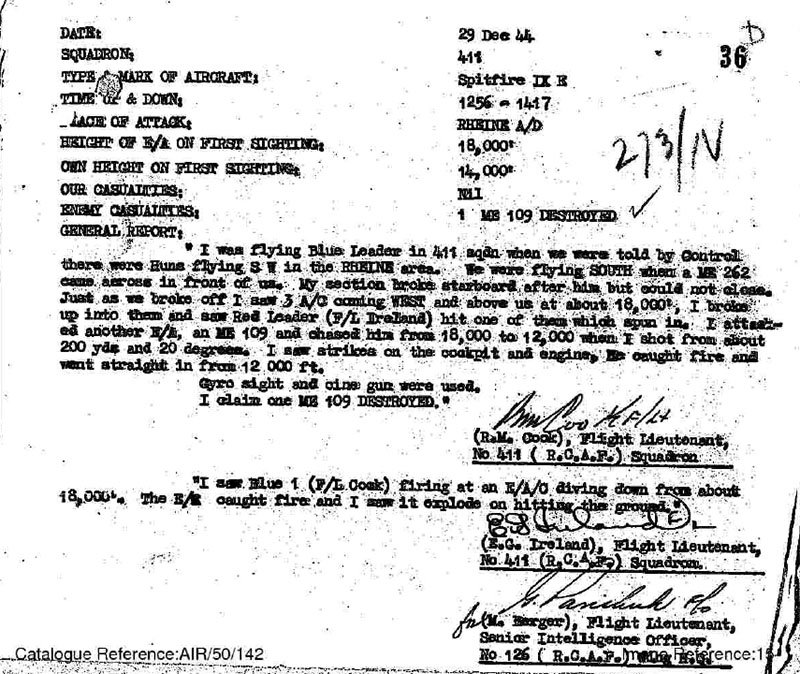
Cooke, with the rest of his flight group, aggressively turned towards the approaching aircraft head-on, flying directly at them. As they rapidly came within range they opened fire, with F/L Ireland (another of Spitfire ML295’s pilots) hitting and destroying one of the Bf109s as they passed.
Bob turned back towards the remaining aircraft and, diving down, managed to get on the tail of one. Closing to 200 yards he opened fire and saw the cockpit and the engine light up and catch fire. He watched as the burning aircraft plummeted 12,000ft straight in to the ground.
Just a few minutes after this another of the flight group’s pilots, Dick Audet, managed to spot and destroy 5 enemy aircraft. This incredible feat, making Ace in a single mission, was covered in more detail in Sortie 11.
When the dust settled on the day, the Germans had lost 8 aircraft and 4 trains, with none of the 411 Spitfires having even been damaged in the assault.
Back to War
Cooke continued to fly Spitfire NH380 on other patrol missions, attacking targets of opportunity. However on 20th Jan 1945, while being piloted by F/O Ellement, NH380 was shot down by flak and destroyed over the Netherlands. The pilot thankfully survived and managed to evade capture.
Clearly Bob didn’t need his lucky Spitfire, as on 23rd Jan 1945 he scored another kill. The below is taken from Bob’s original combat report.
“Blue section of 411 Squadron was orbiting when I saw this FW flying east on the deck along a canal. I went down after him and he turned north and flew along another canal. I closed in on him from dead astern and fired from 500 yds, seeing no strikes but pieces of the E/A broke off and smoke came out of his engine. I kept on firing and just as I over shot, he pulled up and the pilot tried to bail out. I flew along beside him and saw him stand up in cockpit. He opened his chute but it caught in his tail. The pilot was dragged along the fuselage and went into the deck with his aircraft. It blew up and burned. Cine camera and Gyro gun sight were used.
I claim one FW190 DESTROYED”.
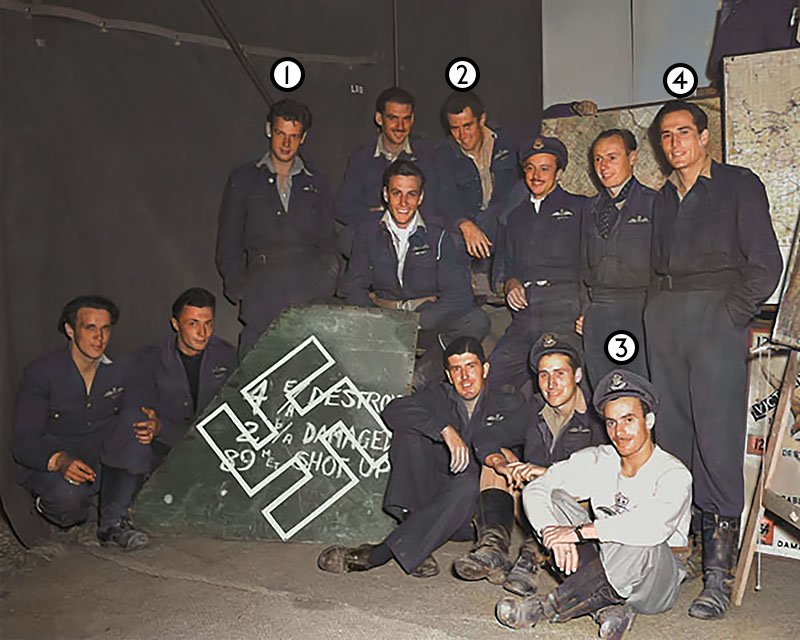
With the war starting to come to an end, the frequency of the missions flown started to gradually reduce. Although with efforts now concentrated within Germany, the squadron still managed to find plenty of targets to attack and caused considerable damage to the German ability to resist.
Farewell
On 11th March 1945 the Squadron notes state: “R.M. Cook departed today. “Cookie” is tour expired we hope to see him back with us.”
Overall, Bob Cooke had flown 111 sorties with 411 Squadron, plus his 7 missions with 416 Squadron bringing his total to 118 operational flights. During this time he destroyed 4 aircraft and damaged a further 2, alongside destroying a countless number of trains, trucks and other ground targets.
After the War
After finishing his tour, he returned home to Canada and moved back in with his parents and brother. For a short time he worked in Pendleton, working at the No.10 Elementary Flying Training School as an instructor.
By 1949 he had moved out and was living by himself in Milton, although he continued to work as a pilot. The big change came in 1951, when after getting married and having the first two of his daughters, he began working as a pioneer helicopter pilot and moved to Oshawa.
In January 1952, Bob Cooke landed a job as the first helicopter pilot to work within the postal service, and began making experimental flights from Newfoundland out to 20 remote towns each week.
Flying in a Hiller Model 360, Bob provided an essential service for these isolated communities, who would otherwise have had to wait in excess of 2 months for the delivery of their mail and have been completely cut off from the outside world during the harsh winter months.
Facing rugged terrain, wild weather conditions and with the helicopter technology still in its infancy, the vital work Bob carried out was an incredibly dangerous career.
Tragedy
The below is transcribed from The Gazette, a Montreal newspaper.
“Helicopter Crash Kills Veteran Pilot
Toronto, Aug 7 1952
A Helicopter crash in Northern Quebec today killed Robert McLean Cooke, 33, of Oshawa.
Cooke was employed by Kenting Aviation Ltd of Oshawa, the aircraft operating company for Photographic Survey Corporation of Toronto.
An announcement by Photographic Survey Corporation said the helicopter piloted by Cooke struck a wire and crashed into the Bersimis River near the site of the proposed Quebec hydro dam 100 miles north of Baie Comeau. Cooke was alone in the aircraft.
A veteran of RCAF service during the Second World War, Cooke had flown helicopters for 18 months.
He was credited with initiating the first regular helicopter mail delivery service in Canada. Flying from Lewisporte in the Gander Bay area of Newfoundland, from last Jan. 7 to April 30, he carried 15,000 pounds of mail altogether to 18 isolated mission communities on islands along the coast.
His widow and two children live in Oshawa.”
Lake Cooke
The proposed hydroelectric dam was opened in 1953 and so we can use that to locate the position of the tragic crash. In an area that is otherwise wilderness, runs one of the main overhead power transmission lines in Quebec. Around 6km north of the dam, these lines cross the Bersimis River, and so this would match the described area of the crash.
Just 2.5kms from the area of the crash is a large lake which is named Lake Cooke (Lac Cooke). I have been in touch with the Toponymy Commission in Quebec, who hold the records of all the history of place names in the area. They are not certain as to the history of the lake’s name – so it remains a possibility that Lake Cooke was named after the pioneer helicopter and veteran Spitfire pilot.

Following the tragedy, Bob’s wife was left with two young children and was pregnant with their third. It is difficult to comprehend the difficulty of the situation she now faced. With her children, she moved back to Milton, where family, including Bob’s parents and brother, still lived.
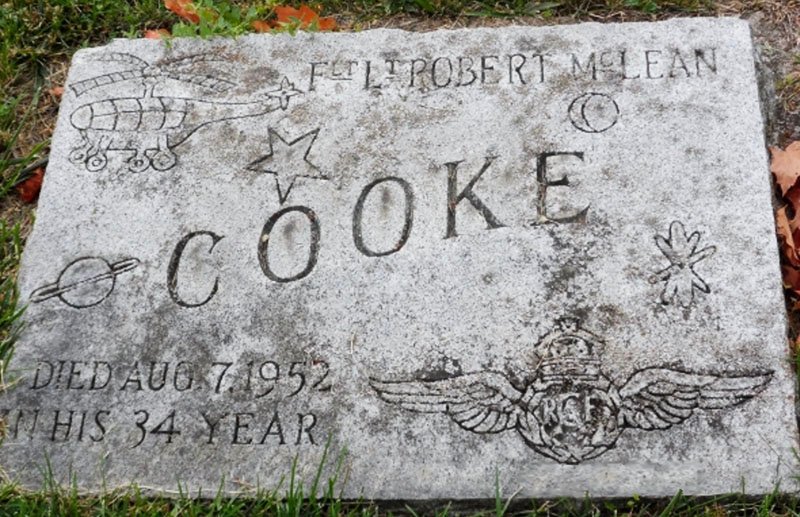
With the eldest of their three children being only two years old at the time of Bob’s death, sadly none of his daughters remember their father.
Bob’s wife never remarried and when she later passed away, she was buried alongside Bob in Milton.
Rest in peace, Flight Lieutenant Robert “Bob” McLean Cooke.
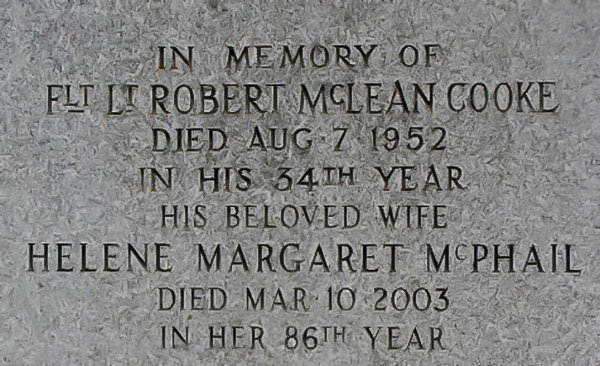
______________________________________________
I hope that you enjoyed reading the story of Bob Cooke; he was just 1 of the 11 incredible pilots who flew in Spitfire ML295.
As the orders for The Few have come in and production of the watch has begun, over the coming months I will begin to showcase the fabrication of the watch and show how the authentic material from Spitfire ML295 is being incorporated into the timepiece.
But before that series begins, I’ll start with an important question for anyone interested in watches – do they make good investments?
A Watch as an Investment
In December 2021, a watch made by Roger Smith – a watchmaker from Bolton, now based on the Isle of Man – sold at auction for a staggering c.£532,500.
Incredibly this watch had originally been sold in 2018 for c.£120,000 – an increase of over 300% in just three years.
Although the auction house described the piece as special, Roger Smith only produces 12 watches a year, so this example was not exceptionally unique by his standards.
While this example is extraordinary, it is not an isolated event and there are many recent examples of more mainstream brand’s watches achieving staggering growth in their resale value.

A wrist watch, particularly in periods of economic uncertainty, remains not just a tangible asset, but also a practical one; being one of the few pieces of jewellery that men choose to wear regularly.
Every year the number of people able to afford a luxury watch worldwide increases. However, as that demand has risen, the supply has not increased to match that; Rolex for instance produces as many watches today as they did 20 years ago – around 1 million pieces a year.
This has meant that in many cases demand has massively outstripped supply, and multiple brands now enjoy long waiting lists, with some buyers able to make thousands from just selling their place in the queue.
Unless global habits make a sharp reverse, then it is likely that this phenomenon will continue.
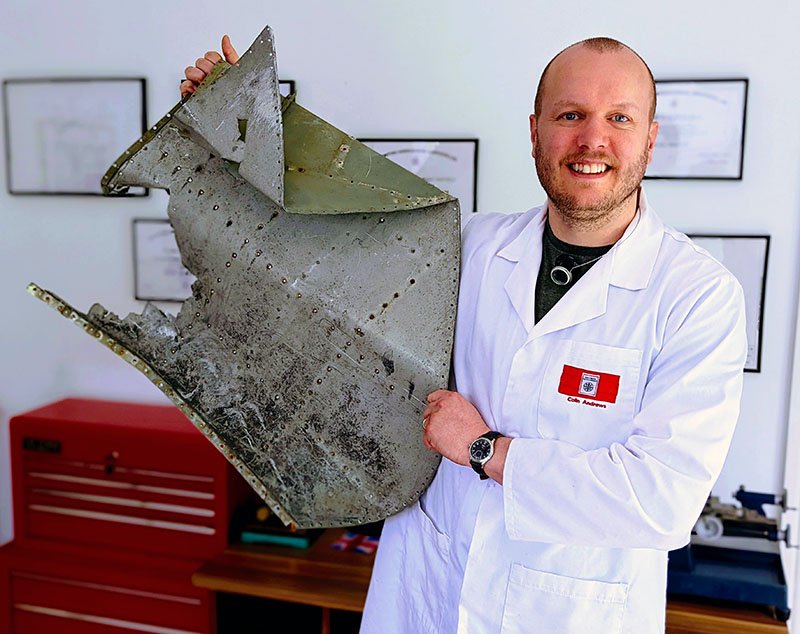
When creating my watches my goal was to not just provide value for money, but also provide a sound investment.
I aimed to do this by combining two passions – watches and Spitfires – and crafting something that was both incredibly limited and also unrepeatable. Judging from the response I’ve received, it seems to have hit the right note.
Spitfire material itself is very scarce and only becoming rarer. The aluminium is valuable and can easily be recycled, which led to most of the aircraft being scrapped after the war.
The majority of Spitfires that did manage to survive either didn’t see active service or were built after the war had ended. The limited amount of material from war-time generally has no authentic provenance, where its origins can be traced with 100% certainty.
Spitfire ML295 is perhaps one of the last ever restorations of a Spitfire that saw both combat and didn’t end in tragedy (no pilot was harmed in the aircraft).
With this coupled with the fact that there are perhaps as few as 11 practicing watchmakers left in the UK (with this declining number meaning the craft is now listed as critically endangered), the reality is that once the last of my orders has been fulfilled, it will be impossible for anyone – myself included – to create another of these watches.
The owners of The Few will be able to show-off their watch and when asked “where can I get one?”, the answer will be a straightforward – “you can’t!”.
Next Sortie
We will take a look at another of Spitfire ML295’s pilots, Harold Nixon. An accomplished boxer and wrestler, he took his brawling skills to the skies and earned himself a Distinguished Flying Cross.
See you there.




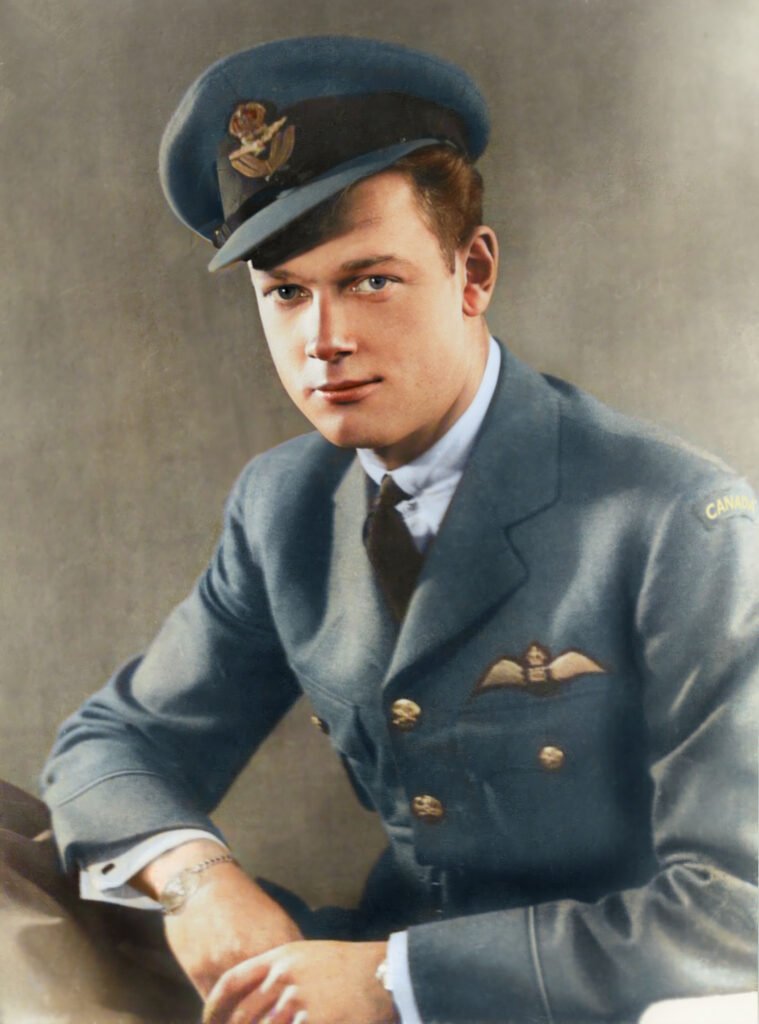
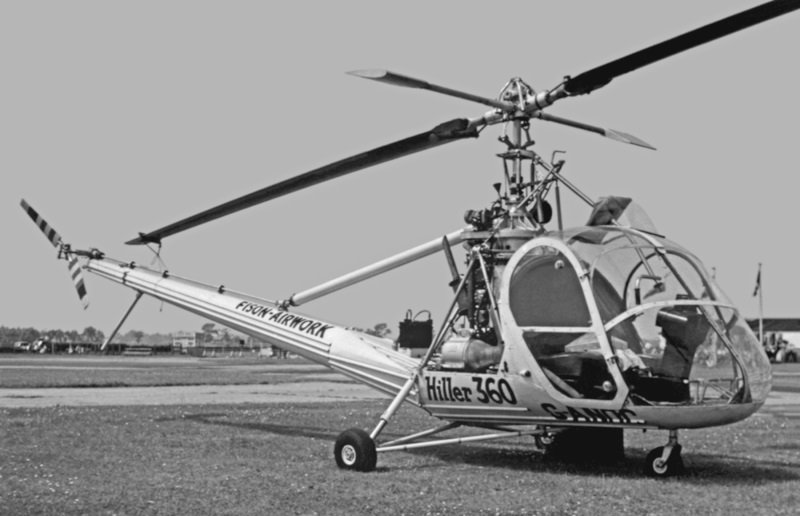
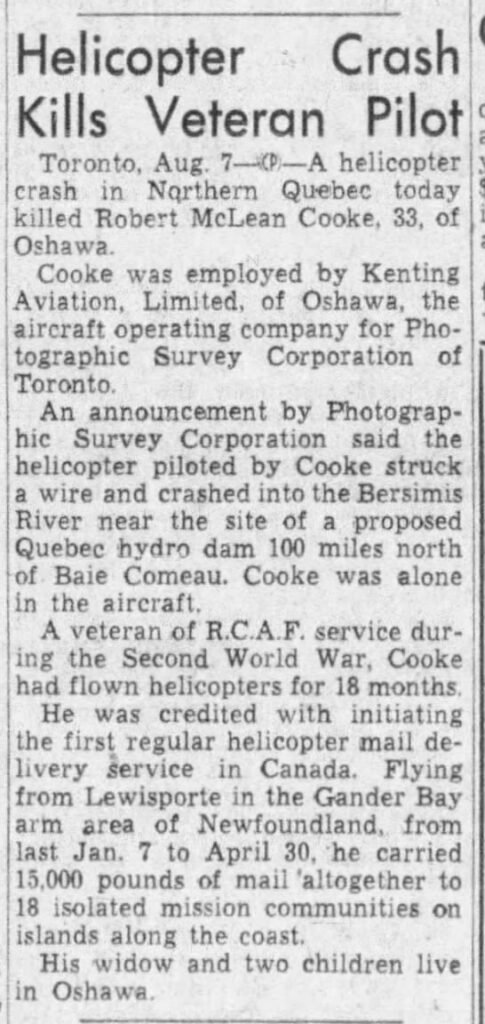
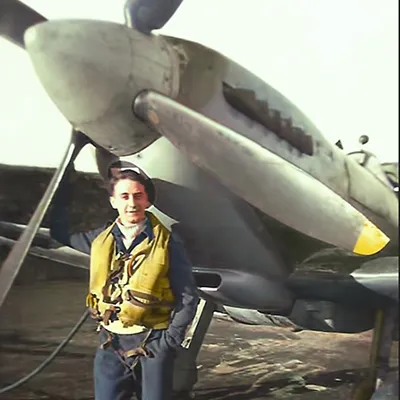

L. Tracey
2 November, 2022 at 2:59 am
Colin would you e-mail me this article on Bob please… I would like to make a copy for the gifts. Thanks. LT
Colin
6 November, 2022 at 3:02 pm
Hi, no problem Larry.
I’ll format and send you the article.
Colin